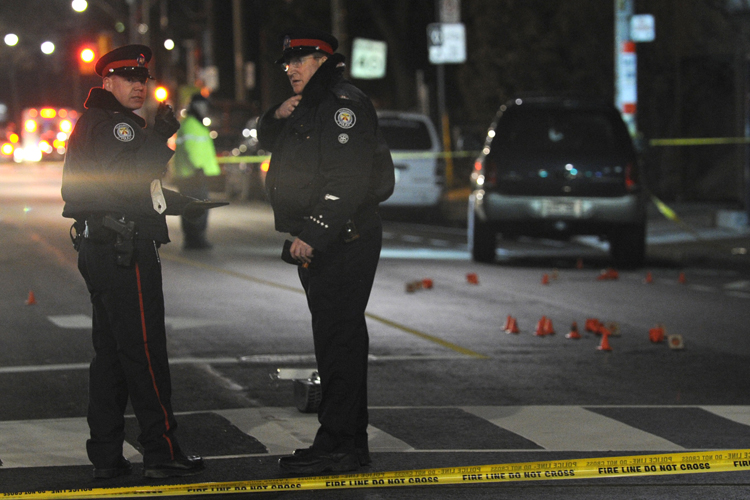On average, nine more pedestrians are hurt or killed in Toronto in the week after the fall time change than in the weeks before or following, police statistics show.

Global News analyzed 10 years of Toronto pedestrian accident data released under access-to-information laws.
Our analysis allowed for Ontario’s shift to extended Daylight Saving Time in 2007, which pushed the fall time change into early November from late October. In other words, the spike isn’t something that coincides with the time change, but seems to be connected to it.

From 2000 to 2009, an average of 46.8 pedestrians were injured in the week before the fall time change; 57.5 were hurt in the week following the fall time change; and 50.8 in the week following that.
In 2007, the first year that the fall time change fell in early November, there were 86 pedestrian injuries in the week following the change, as opposed to 44 injuries and 54 injuries in the weeks before and after.
A 2007 U.S. study showed the same effect, and connected it to the fact that evening rush hour is plunged suddenly into darkness after the time change in much of North America. New York City accident data shows much the same pattern.
READ: 4 ways Daylight Saving Time affects your health, internal clock
- B.C. to ban drug use in all public places in major overhaul of decriminalization
- 3 women diagnosed with HIV after ‘vampire facials’ at unlicensed U.S. spa
- Solar eclipse eye damage: More than 160 cases reported in Ontario, Quebec
- ‘Super lice’ are becoming more resistant to chemical shampoos. What to use instead
No similar effect was seen with the spring time change, though U.S. data shows a drop in pedestrian collisions connected to springing forward.
Some road safety experts have argued for getting rid of the time change entirely, and having Daylight Saving Time all year round.
This would make the afternoons lighter, and the mornings darker, in colder times of the year. But since accidents spike in the afternoon, it would lead to an overall reduction in accidents by adding natural light at a dangerous time of day, they argue.
In the 1990s, a study by the U.S. Insurance Institute for Highway Safety argued that having Daylight Saving Time all year round would save almost 200 lives a year in that country. A 2008 British study found that a similar move would save 80 lives there.
Britain experimented with getting rid of the time change for three years between 1968 and 1970. Accidents in the morning increased, but they were more than offset by fewer accidents in the afternoon.
The experiment was unpopular in Scotland, where high latitudes meant that the sun rose well into the working day in winter, and press coverage focused on the rise in morning accidents. While accidents fell in Britain as a whole, they rose in northern Scotland.

Also, Britain brought in drunk driving laws and compulsory seat belts in 1967, making a fall in road injuries hard to link to a single cause at the time, though more recent research links the time experiment to a fall in accidents.
In Britain, former West Yorkshire chief constable Keith Hallawell argued in 2015 that getting rid of the time change “could save hundreds of children’s lives” by having more light in the late afternoon. His study used British accident data.
READ: UBC economist looks into whether Daylight Saving Time is really necessary
The shift to and from Daylight Saving Time has attracted its share of controversy. University of British Columbia economist Werner Antweiler has argued for getting rid of the time change, probably by staying with DST all year round.


Comments